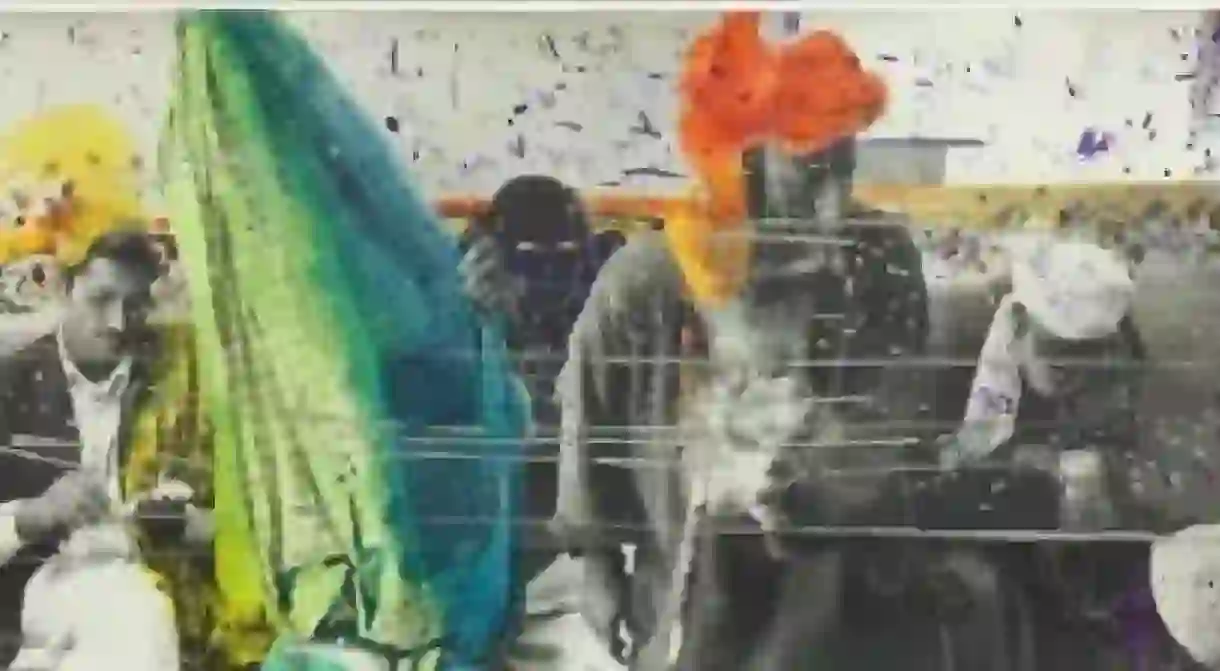Sigmar Polke | From Meteor Dust to Bubble Wrap

German-born Sigmar Polke is considered one of the most experimental and influential artists of the 20th century – his works constantly undermine traditional artistic processes and challenge viewers with daring and innovative techniques. On the eve of Tate Modern’s retrospective in London, Culture Trip examines Polke’s five-decade career and explore what set him apart from other contemporary artists of his time.
Born to a German family in the midst of World War II, Sigmar Polke did not experience an easy early childhood. He began life in the town of Oels in present-day Poland, but was forced to flee with his family to Thuringia in 1945, during the expulsion of Germans from Eastern Europe. When Thuringia became a part of Communist East Germany, his family were forced to escape again, this time to West Germany via Berlin.

It was thanks to his new home and situation that Polke became drawn to the visual arts. The family had relocated to Willich, a town near Düsseldorf, which at the time was a booming artistic and cultural hub in Germany. Polke visited many museums and galleries, before enrolling in the Kunstakademie Düsseldorf in Germany.

His childhood experiences also had a profound effect on the themes within Polke’s work. Despite a career of almost 50 years, Polke maintained the same focus in his work throughout all of its different stages. At the heart of his work is a marked political and social commentary regarding post-war Germany and the rise of a modern, consumerist society. Polke also looked to the recent past in order to confront the present, with much of his work including strong anti-Nazi themes while questioning the remnants of Nazism in German ideology through iconography of swastikas and watchtowers.

Polke’s criticism of prescriptive political and social structures spilled into his perspective on the art world. Polke was deeply critical of authoritarian, traditional ideas of how to look at and comprehend art, viewing such prescriptivism as a parallel to Nazi ideals of purity and control. Polke sought to counteract this by focusing on corruption, contamination and transformation in his works. He used a variety of cutting-edge techniques, such as digital media and chemicals, in order to manipulate his works. He thus challenged the viewer to approach works without a classic, academic framework and to consider them anew. Due to the length of his artistic career, the style and methods Polke employed to express these ideas changed, but the principles behind them remained throughout. The exhibition at the Tate Modern is ideally set up to show this development, progressing chronologically from Polke’s first paintings and sketches through to his last works.

Polke’s earliest works replicate American pop art style and critique the emptiness of consumerism and advertising by depicting bland, bourgeois products such as socks, plastic boxes and chocolate bars. These, along with the works of Gerhard Richter, Manfred Kuttner and Konrad Leug, became a foundation for the Capitalist Realism movement, a play on the Soviet’s Socialist Realism. It was around this time that Polke became fascinated with images in media, and by the practice of ‘raster’ images – pictures made up of rows of dots. Polke adopted this technique on large-scale canvases so that, when viewed in a gallery, the individual dots take over the painting and de-contextualize the image.

It is this experimentation with materials and techniques which came to define his later style, allowing him to fully explore his fascination with decay and transformation. In his triptych Negative Value, featured in the 1982 Documenta exhibition in Kassel, Polke created a postmodern experience by employing special pigments which would change from purple to bronze when viewed from different angles and in different lights. Polke thereby undermined the authority of the artist as creator and controller of the viewer’s visual experience, relying rather on the viewer for both creation and interpretation. In the 1990s, Polke began using photocopiers to produce warped, deformed images from 19th century books – each, despite the photocopier’s intended function, an individual representation of distortion and manipulation. Taken as a whole, Polke’s oeuvre provides a fascinating snapshot of art in the last half of the 20th century, as well as an insight into the minds of the post-war generation.

As he moved into the 1970s, Polke began to break even further away from what he saw as the rigid confines of the art world. By experimenting with hallucinogenic drugs, he experienced new visions and perspectives, depicting these through evocative juxtapositions of cheery, floral fabrics, pornographic images and children’s cartoons. Polke also began to experiment with photography, again rejecting traditional methods by overexposing his photographs, folding them while still wet so the chemicals and inks ran, before hand-coloring sections of them himself.
* Note: This exhibition is now closed













